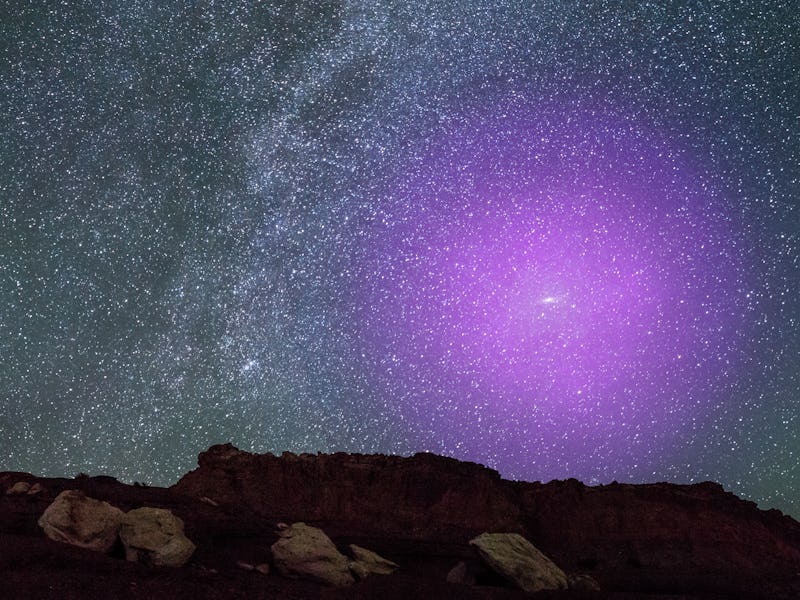'Groundbreaking' Hubble images reveal Andromeda galaxy's gigantic halo
These stunning maps represent the most comprehensive study of a galaxy halo to date.

Located 2.5 million light years away, the Andromeda galaxy is our closest galactic neighbor.
The spiral galaxy is also the most distant object you can see with the naked eye from Earth, making it a good test subject for studying these massive conglomerations of gas and stars.
In a new study, NASA's Hubble Space Telescope mapped Andromeda's halo — the envelope of gas that surrounds the galaxy — in unprecedented detail.
The Milky Way and Andromeda are very close, on the cosmic scale, and they are getting ever-closer. Andromeda is inching towards our galaxy at an estimated rate of around 250,000 miles per hour. That’s 2,000 times faster than a fastball, according to NASA estimates.
In fact, the two galaxies are on a collision course with one another, drawn together by their gravitational force. Eventually, they will merge in around 4.5 billion years.
Andromeda's halo helps put that time and space into perspective on the cosmic scale: These new maps reveal the halo extends some 1.3 million light-years out from the galaxy — about halfway to our Milky Way. That means that Andromeda's halo is already 'bumping' into the Milky Way, according to NASA.
The massive halo of gas is outlined in this image captured of the Andromeda galaxy.
The observations are detailed in a study published Thursday in The Astrophysical Journal.
“Understanding the huge halos of gas surrounding galaxies is immensely important,” Samantha Berek, a researcher at Yale University in New Haven, Connecticut, and co-investigator on the recent observations, said in a statement.
“This reservoir of gas contains fuel for future star formation within the galaxy, as well as outflows from events such as supernovae. It’s full of clues regarding the past and future evolution of the galaxy, and we’re finally able to study it in great detail in our closest galactic neighbor.”
Observing the halo is no easy feat. Andromeda's halo is made up of highly ionized gas that does not emit radiation. So in order to observe it, the team of researchers had to examine the light form 43 quasars, very bright and active galactic nuclei, located far beyond Andromeda. They then observed how the light being emitted by the quasars is absorbed by the Andromeda halo, and how that absorption changes in different regions.
Andromeda's massive halo contains an inner shell and outer shell. The inner shell extends to about half a million light years wide.
This illustration shows the location of the 43 quasars scientists used to probe Andromeda’s gaseous halo.
While the halo surrounding Andromeda has been observed before, it was never with this much detail. The new observations reveal its complexity. In fact, these observations are perhaps the most comprehensive study of a halo surrounding a galaxy to date — and the images collected are beautiful.
“This is truly a unique experiment because only with Andromeda do we have information on its halo along not only one or two sightlines, but over 40,” Nicolas Lehner, a researcher at the University of Notre Dame in Indiana, and lead author of the study, said in a statement.
“This is groundbreaking for capturing the complexity of a galaxy halo beyond our own Milky Way.”
This article was originally published on